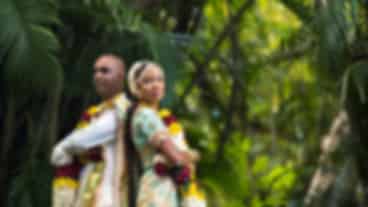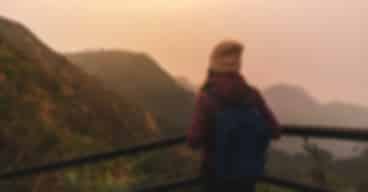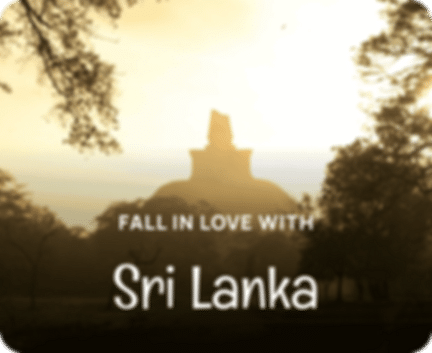Inside the Royal City Palace of Udaipur, Rajasthan
Author
Buvaneshwari Gopinath
Updated Date
February 25, 2025
Read
7 minutes

One of the most iconic landmarks of Rajasthan is the City Palace in Udaipur. It is considered to be the largest palace ever built in the entire state. Located on the banks of Pichola, the palace has a got view of the city worth admiring. The unique designs on the ground of the palace represent the toughness and the compassion of the rulers while the palace symbolises the celebration of strength and order in a grand manner.

City Palace in Udaipur
History of City Palace
The City Palace of Udaipur, located on the eastern side of Lake Pichola was built nearly 400 years ago by Maharana Uday Singh. The royal palace was built up when Maharana Uday Singh set up his kingdom’s capital in Udaipur. The palace is also said to be related to the Mewar Kingdom that ruled the city. Throughout history, the city has faced several capital changes, fall of reigns and rulers. Till date, its the family of Mewar royal that owns the palace. However, the other structures and complexes of the palace are maintained by various trusts and are turned into heritage hotels and are open to the public now.
The architectural design of the Palace
The City Palace in Udaipur is beautifully constructed on the banks of the nearby lake, Pichola. Built entirely from granite and marble, the palace is truly a work of art. The designs of the palaces have a blend of European, Medieval and Chinese architecture. Every balconies and tower within the palace are carefully constructed to admire the stunning view of the lake and the city which surrounds it. The city palace is not just one but four and more palaces combined together. The design was approved by Maharana Uday Singh himself, post which it was constructed. Each palace inside the city palace has a unique pattern and designs like glasswork, mirror tiles, designs carved out of marble and even ornamental tiles.
The terrace of the palace is as commendable as the exterior of the palace. The view from the above the palace is simply breathtaking. The 11 mini palaces inside are connected by corridors and chowks that are constructed based on the designs of a maze to evade any surprise attacks from the fellow kingdoms or the enemies. There are various structures and complexes in the palace that is to be noted like the Tripolia which is the main gate and the entry point to the palace, the Suraj Gokhda where the people of the kingdom are gathered together for any address, Sheesh Mahal is the palace entirely made of mirrors and glasses and lot more.
Iconic structures of the Palace that you shouldn’t miss seeing
1. The Gateways

Gates to the City Palace
Known as Pols in the colonial language, refers to the gates of the palaces. There are three main gateways that act as the entry and exit points to the palace. The Badi Pol aka the Great Gate, The Tripola which is a triple-arched gate and Hathi Pol which is known as the Elephant Gate. All these gates were built at different points of time for different reasons.
2. Amar Villa
Amar vila is a garden located in the highest place in the City Palace. It is a beautiful garden with hanging plants, fountains and is an elevated garden built in the Mughal style that serves as a leisure home to the royals.
3. Badi Mahal
Badi Palace, known as the Great Palace is the main building/palace in the entire complex. The palace was built on top of an 89 feet rock and can be entered only by passing through Amar Villa. The Badi Mahal compromises of swimming pools, and halls that exhibit artefacts from the 18th & 19th century.
4. Bhim Villa
A huge gallery that contains paintings of Lord Krishna & Radha and the masterpiece that illustrates their story is Bhim Villa, a mesmerizing place for art lovers.
5. Chini Chitrashala

Rooms decorated with colourful tiles
The place where excess pretty ornamental tiles from the Chinese and Dutch were brought to decorate the palace is stored and exhibited.
6. Choti Chitrashala
As the name itself says, it refers to the home to small paintings.
7. Dikusha Mahal
Constructed in 1620, is the Palace of Joy that houses paintings that displays having unique artistic skills.
8. Durbar Hall
Durbar Hall refers to the place where the official functions and meetings are held. The Durbar Hall was used during the rule of Maharana Fateh Singh in the year 1909. The hall is decorated with huge chandeliers and brilliant lighting.
9. Fateh Prakash Palace
A place where Maharana Sajjan Singh had stored his collection of crystals chairs, tables and sofas. The palace is now turned into a luxury hotel.
10. Manak Mahal
One of the most adorable complexes in the City Palace is the Manak Mahal also known as the Ruby Palace. It is decorated with mirrors and rubies.
11. Mor Chowk

Entrance to Mor Chowk
Mor Chowk refers to the peacock garden inside the palace with three peacocks that were used to depict the seasons. The garden is decorated with mosaic mirrors in the shades of blue, green and gold.
12. Rang Bhavan
Once a treasure storage space, Now turned into a temple with Lord Krishna, Lorsh Shiva and Meera Bai as the main deities of the temple. It is one of the most visited temples in Udaipur.
13. Museum
A part of the city palace was converted into a museum that allows the public to learn more about the culture and heritage of the Mewar kingdom. The museum was opened in the year 1974 to the public and remains open to date. The museum can be visited by the public anytime between 9:30 AM – 5:30 PM. The entry fee of the museum is Rs 250/- per person and different fares apply to carry the camera and video recorders inside the museum.
How to reach the City Palace in Udaipur?
Being a famous attraction, everyone in the city knows where it is located. There are several autos, taxis and city buses that go through the palace.
The ideal time to visit the palace would be?
The best time to visit the city and the palace would be during the months of October to March when the weather is pleasant.
Entry fee & Open hours
The palace is open from 9:30 AM – 5:30 PM on all days of the week. The entry fee to the palace is Rs 30/- for adults and, Rs 15/- for children and different fee are applicable for cameras and video recorder.
Get a chance to witness the history of India by travelling to Rajasthan with Pickyourtrail. Get a suitable package for you from the numbers of packages available on our website. Want more?
We at pickyourtrail are at your service to give you a premium experience to these offbeat places and help you plan your International tour package.
Indian Tourism Useful Resources
Andhra Pradesh Tourism | Uttarakhand Tourism | Sikkim Tourism | Andaman Nicobar Tourism | Rajasthan Tourism | Goa Tourism | Lakshadweep Tourism | Telangana Tourism | Meghalaya Tourism | Kashmir Tourism
Places to Visit Useful Resources
Places to Visit in Uttarakhand | Places to Visit in Goa | Places to Visit in Kashmir | Places to Visit in Rajasthan| Places to Visit in Sikkim | Places to Visit in Andaman Nicobar | Places to Visit in Meghalaya | Places to Visit in Andhra Pradesh | Places to Visit in Lakshadweep | Places to Visit in Telangana
Things to do Useful Resources
Things to do in Goa | Things to do in Andaman Nicobar | Things to do in Kashmir | Things to do in Lakshadweep | Things to do in Sikkim | Things to do in Meghalaya | Things to do in Rajasthan | Things to do in Uttarakhand | Things to do in Andhra Pradesh | Things to do in Telangana
Best Time to Visit Useful Resources
Best Time to Visit Kashmir | Best Time to Visit Andaman Nicobar | Best Time to Visit Goa | Best Time to Visit Sikkim | Best Time to Visit Rajasthan | Best Time to Visit Lakshadweep | Best Time to Visit Meghalaya | Best Time to Visit Uttarakhand | Best Time to Visit Andhra Pradesh | Best Time to Visit Telangana
Recommended articles for you
Discover Packages


Need help in planning?
Talk to our Travel Experts






























